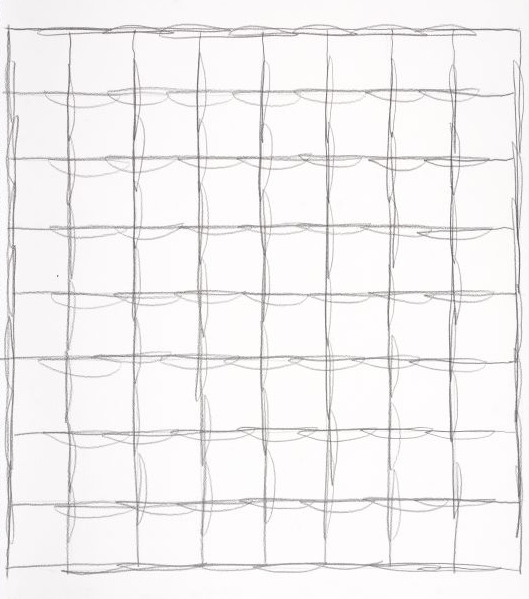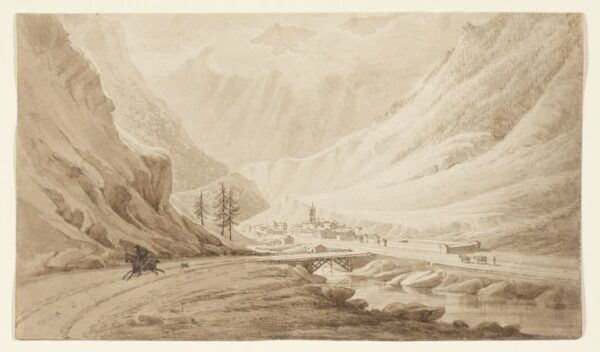
News Archive 2024
From the Baroque to Today: New Acquisitions of Works on Paper – celebrating women artists in The Courtauld’s collection
To celebrate International Women’s Day 2024, explore some of the remarkable works by women artists acquired since 2018 when the Gallery closed for a major renovation.
Since its founding in 1932, The Courtauld’s collection has continued to grow through gifts, bequests and purchases, chiefly of drawings and prints. Our latest Drawings Gallery display, From the Baroque to Today: New Acquisitions of Works on Paper, presents a selection of works spanning the late 17th to the early 21st centuries. It shows artists working across a wide range of techniques, media and subject matter, and features works by women artists including Maliheh Afnan, Mary Cassatt, Linda Karshan, Deanna Petherbridge and Susan Schwalb.
Mary Cassatt
One of the most exciting acquisitions we’ve been able to make recently is two prints by Mary Cassatt. Mary Cassatt was one of three women who exhibited with the Impressionists in Paris, and she was also the only American to be a member of the Impressionist circle. She was also the only Impressionist artist not represented in The Courtauld’s collection up until last year.
As well as being a painter and a pastelist, Cassatt was a committed and highly experimental printmaker, making over 250 prints over the course of her career. The Parrot (around 1891) and Quietude (1891) are her first works to enter the collection.
In The Parrot, Mary Cassatt posed her model – likely to be her maid, Mathilde – with an unusual companion, an Amazon yellow parrot. Depicting the woman’s skirt and chair with great economy, she lavished detail on her head, hands and enigmatic, pensive expression. We see her incredibly fine eye for detail, especially in the way she has carefully rendered the texture of the material of her dress and the individual strands of her hair.
In this impression of Quietude, Cassatt deliberately left traces of the previous states on the printing plate, here particularly apparent in the woman’s arm and hand and the baby’s legs. Mothers and children, depicted in a matter-of-fact and unsentimental manner unusual for the period, were Mary Cassatt’s favourite subject. A committed and highly experimental printmaker, Cassatt often produced several different states, or versions, of her drypoints.
Purchased with funding from the Rick Mather David Scrase Foundation, 2023; Richard Mansell Jones gift, 2023
Linda Karshan, Loopy (2022)
Linda Karshan’s artistic practice is concerned with the fundamental qualities of draughtsmanship: structure, rhythm, balance and harmony. Many of her drawings take the form of a grid, formed by her rhythmic walking around the sheet of paper.
Though her approach has evolved gradually over time, Loopy (2022), one of the most recent works to enter our collection, is still very much informed by the movement and types of rhythmic mark-making that characterise her oeuvre. Of this work the artist has said:
“These quick ‘loops’ hark back to loops from 1996. In this piece, the loops fall at the intersections, and NOT between the intersections. It’s a case of dynamism, and embodied knowledge. The rhythmic, downward movements swept me along. They had their own momentum. I did not interfere.”
Karshan gifted this drawing to mark the retirement of Professor Deborah Swallow, Director of The Courtauld from 2004-2023, and as a pendant to her own drawing Untitled (1995), also in the collection.
Gift of the artist in honour of Professor Deborah Swallow, 2023

Elizabeth Batty
Elizabeth Frances Batty was a British artist born in 1791. She received lessons in drawing as a young woman and at the age of 26 at the age of 17 she went on a tour of France and Italy with her father.
She filled a sketchbook with incredibly finely detailed views of the landscapes that she passed through, including these finely observed views of the French Alps while on this tour in 1817 of Aiguebelle, the Pass of Bramante and Lans Le Bourg. Remarkable for their delicate detail and subtle use of wash, they form part of a group of 44 drawings that were engraved and published to critical acclaim in London in 1820.
Batty’s marriage in 1822 brought her artistic career to a premature end. The Italian tour drawings – the only ones by her hand that survive – have only recently been rediscovered.
Spooner Charitable Trust gift, 2022



Malileh Afnan, The Calligrapher (1992)
Maliheh Afnan’s artwork was influenced by the flowing lines of Arabic and Persian script. A pattern of calligraphic marks outlines the face, suggestive of the subject’s internal dialogue, whilst creating a gauze-like screen which veils the features.
The use of dry pigments and ink on paper replicates the colours and texture of ancient parchment. By alluding to the materiality of archaeological remains, the artist explores the cultural history of her Palestinian homeland. This haunting portrait evokes a complex inner landscape of thought and emotion.

Deanna Petherbridge, Mary Mandala (1973)
In the 1970s, when Deanna Petherbridge worked primarily in pen and ink, she explored the threshold between figuration and abstraction and perspective and patterning, taking inspiration from the geometries of Islamic architecture and Asian mandalas (geometric configurations of symbols used in various spiritual traditions). The repetitive pen work produced forms which spin outward from the centre and which could be hung in any orientation. Adopting such imagery allowed her to experiment with an alternative to the narrow formal preoccupations of Pop Art and Minimalism, which dominated British art at the time.

Helen Allingham, Sandhills, Witley (Master Hardy's), around 1881-88
This cottage in Surrey, the home of a labourer named Hardy, was a favourite subject of Helen Allingham during the seven years she lived in the area, and she painted it several times. This confident composition, made without a preliminary drawing, showcases her mastery of watercolour. Rather than use white opaque watercolour to achieve highlights, she scratched the surface to reveal the bare paper, creating an impression of cloud-shadowed light.
Allingham was the first woman to be admitted as a full member to the Royal Watercolour Society. Her illustrations, published in magazines, were admired by other artists, including Vincent van Gogh.
Spooner Charitable Trust gift, 2023

Susan Schwalb, Harmonizations #5 (2015)
Susan Schwalb is one of the leading practitioners today of metalpoint, a drawing technique that originated during the Renaissance. In Harmonizations #5, she uses five different metals to create a grid of blocks of parallel or layered, crosshatched lines. Each block seems to shimmer or pulsate against the dark gesso ground. This visual vibration evokes the idea of sound or even music, an idea echoed in the drawing’s title. Schwalb has stated that she wants viewers ‘to experience the effect of an abstract universe composed of lines and reflections of light.’
Acquired by the Samuel Courtauld Trust with the support of the Tavolozza Foundation, 2020

Adélaïde-Marie-Anne Moitte, The artist’s daughter Louise playing the fortepiano (1797)
Captured in the midst of playing, Adélaïde Moitte’s adopted daughter may be performing at one of the family’s fashionable musical salons. Although she received professional training, Moitte’s artistic career was cut short by her marriage. She continued to draw, sharing her work only with friends and family. A revolutionary and a passionate advocate of education for girls, her drawings and the diary she kept between 1805-1807 offer a compelling glimpse into the realities of middle-class life in Paris during the Revolution and the early days of the First Empire.
Most of Moitte’s known drawings were made on the pages of account books; she skilfully incorporated the ruled lines into her compositions, here using them to give the impression that we are looking at Louise through a doorway.








